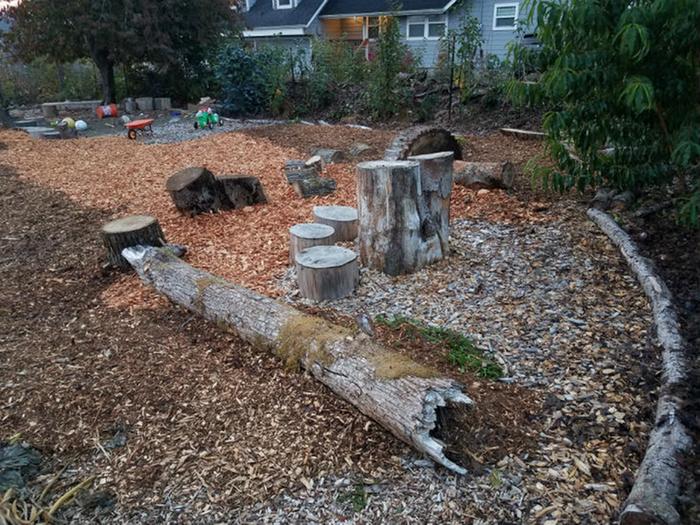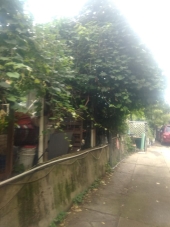
 6
6




You should never forget that every creature has its purpose in the cycle of nature and can also be very important to humans. Sepp Holzer's Permaculture
 3
3




I make a Maple Syrup instructional movie! Check it out HERE
SKIP books, get 'em while they're hot!!! Skills to Inherit Property
See me in a movie building a massive wood staircase:Low Tech Lab Movie
 3
3




T Blankinship wrote:How would one begin this project?
Outdoor and Ecological articles (sporadic Mondays) at http://blog.dxlogan.com/ and my main site is found at http://www.dxlogan.com/
 3
3




 1
1




'Theoretically this level of creeping Orwellian dynamics should ramp up our awareness, but what happens instead is that each alert becomes less and less effective because we're incredibly stupid.' - Jerry Holkins




You should never forget that every creature has its purpose in the cycle of nature and can also be very important to humans. Sepp Holzer's Permaculture








Nican Tlaca
 6
6




 1
1








 2
2








 8
8




 Attached are some pictures of the natural playground that I just built.
Attached are some pictures of the natural playground that I just built.
![Filename: playground-with-hedgerow.jpg
Description: The hedgerow is filled with native plants. A lot are edible. This hedgerow is growing quickly and will fill in soon. [Thumbnail for playground-with-hedgerow.jpg]](/t/125933/a/92394/thumb-playground-with-hedgerow.jpg)

Cultivate abundance for people, plants and wildlife - Growing with Nature



 4
4




 1
1




 3
3




$10.00 is a donation. $1,000 is an investment, $1,000,000 is a purchase.




Cécile Stelzer Johnson wrote:
If you ask how to get such a LOCAL project off the ground, I would suggest to enlist the help of teachers, all grades, within a town. A student's curiosity is boundless and for not much money at all, you can easily lift the enthusiasm for such a project. [Note to the Parents, explaining the project, appealing to them to provide seeds, young trees, bags of mulch from their [non-toxic-] lawns... The appeal to the teachers is that these are lesson plans that practically write themselves, full of opportunities for students of different abilities to shine and fitted to their discipline.
You could point out to the School Board [folks who always want to tighten the purse strings] that for the minimal cost of providing the seeds and plants, (or supplementing what parents can bring, the plot would more than pay for itself: less mowing, a feather in their cap to accomplish a great project, no pesticides [parents will like that]
Around here, we have sometimes what is called a "school forest". It is a piece of land attenant to a school where the Natural/ Earth Science teachers can bring the little kids and show them nature like it should be shown, with lots of explanations, signs.
 1
1




Barb Allen wrote:This is sort of spooky.
You should never forget that every creature has its purpose in the cycle of nature and can also be very important to humans. Sepp Holzer's Permaculture
 1
1




T Blankinship wrote:
Barb Allen wrote:This is sort of spooky.
It is not spooky, it is cool! I am loving the posts.












 1
1





 1
1




Max Lee wrote:A guy recently told me about a local tree trimmer in town. He said that he has so many trimmings (logs, big branches, etc) piling up with no one to consistently take them - that he just has to dump them into the landfill!

Imagine just taking some of your local tree trimmer branches and logs to stack/dovetail/bolt together like asymmetrical Lincoln logs to create unique, organically-curved playgrounds!
$10.00 is a donation. $1,000 is an investment, $1,000,000 is a purchase.




Barb Allen wrote:This is sort of spooky. Last night several friends and I - from a local group called Sustainable Rogue Valley - took plans and ideas to a city council meeting. We had found out a couple weeks ago that the city was putting a beautiful big bottom land acreage (250 acres) they bought 10 yrs. ago and never found a use for -- up for sale - and there were two bidders (one a non-organic farmer and one a rich race horse enthusiast who wanted to set it up for a training center for 400 race horses!) It's right next to the Rogue River...
Our group had cobbled together ideas and funding possibilities and arguments for not selling - each of us focusing on the whole but on their area of "expertise". I put together a plan for a 5 acre "Resiliency" Park - that would be solar and wind powered, and have a small campground (it is right next to a boat ramp) that is tucked into a "food forest" - fruit tree guilds around each campsite. The shower/bathrooms were to be "natural buildings" of some kind (straw bale, cob?) with composting toilets, and showers rain water to some extent. The campsite would wrap around a large native "woodland" - where native edibles would be featured and mushroom growing and plants like ginseng and goldenseal would be grown with the local native plants. There would be a large "dragonfly" pond in the midst with native edible pond plants growing in it.
Along the sunny side of the woodland would be "useful" plants gardens - featuring dye, medicinals, edible "weeds", fiber plants, etc.
There would be a Camp Host who would act as a docent giving daily tours and teaching classes in various permaculture subjects. He/she would live in some sort of alternative housing (tiny house, cob house, yurt) that is solar powered, with composting toilet, a small grey water pond, a small annual veggie garden with demonstration compost bins, worm bins, etc. There would be a small set up for a few hens - and a hoop house.
In a large area surrounded by the ag fields there would be a big pavillion for events and things like yoga, chi gung, etc. It would be surrounded by a "lawn" planted with mini-clover, dandelions, wild strawberries and other plants that would take occasional mowing and the "lawn" would be dotted with larger food trees (walnut, pecan, persimmon, cherry, mulberry, etc...) for shaded picnics and hanging out - and once a year there would be a Resiliency Festival.
The Resiliency Festival would invite vendors of all sorts of eco products and systems (solar panels, small instream hydropower, etc) and there would be classes and demonstrations in useful and homesteading permaculture sorts of skills.
We saw the park as being a great tool for schools and 4-h clubs and garden clubs, etc. with special classes being set up. I even worked a program in for teaching homeless teens here...
I did a quick sketch to give a bit of a visual for the council members... as well as a 3 page proposal... that included a nearby wetland/wildlife sanctuary. I'm going to try to include it here - although I realized in my rush to get it done for the council meeting that I left out many features (like the solar and wind, greywater processing, etc) I have never done an image here so I don't know if this will work...
The bottom line is the city is probably going to sell it to the race horse people because they just don't want to deal with it and don't care about the wetlands or things like resiliency or permaculture (I was careful not to use that term to describe any of it... :-)
It was great fun putting this together I must say. As a landscape designer since the mid 70's I have designed several parks and my designs always focused on food plants and native plants. Our Sustainable Rogue Valley group created a series of 5 Firewise Demonstration gardens (all the plants are fire resistant - we are in wildfire country!) in the local fairgrounds that include a Permaculture garden, a Pollinator garden, a Monarch butterfly garden (that monarchs came to the first season!), a Native Edibles garden and a Rain Garden... They are over 3 years old now and thousands of people see them during Fair time since they are down the main thoroughfare. But this Resiliency park would have been fun....

|
This is awkward. I've grown a second evil head. I'm going to need a machete and a tiny ad ...
Homestead Pigs Course
https://permies.com/wiki/365748/Homestead-Pigs
|





